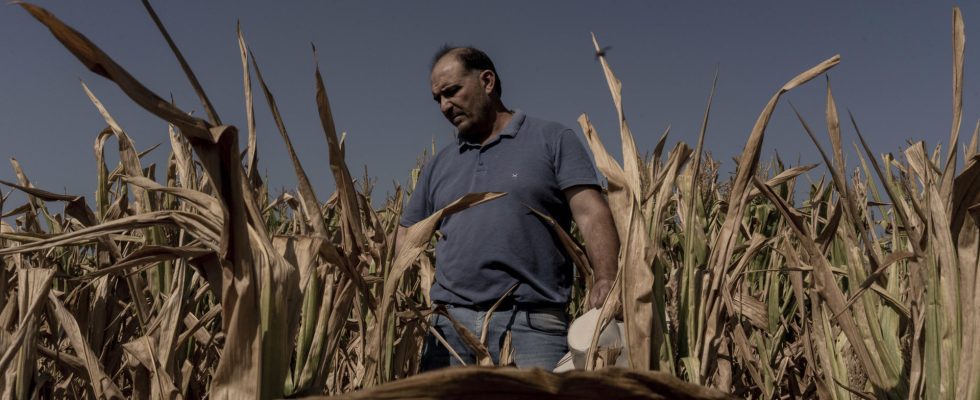Without even looking at his gesture, Roman Gutiérrez tears off a corn leaf, crumples it, and opens his hand. Brown confetti falls on a cracked, thirsty floor. The 51-year-old producer is sinking into his field, near Pergamino (230 kilometers northwest of Buenos Aires). The shoots, many dried up, graze his shoulder. They should, robust and green, largely exceed it. The ears are stunted, dotted with rare pale yellow, stunted swellings. Corn seeds should swell before harvest, bountiful and plump. The farmer squints.
Even in mid-March, when the austral autumn arrives and with it milder temperatures, a scorching sun continues to slap the so-called region of ” core “ : Argentina’s agricultural pride, in the center-east, home to the most fertile land. Here, over millions of hectares, soybeans, corn and wheat are grown. The country’s producing and exporting engine. It is this year suffocated by a severe drought with cascading consequences on an already weak economy.
Argentina experienced the hottest summer in its history. The agricultural “nucleus” in particular was hit by perceived temperatures that repeatedly exceeded 40°C, under the impact of the natural La Niña phenomenon and climate change. On average, the summer showed a thermometer 1.3°C above normal. Extreme heat, which has finished evaporating the little moisture in the soil.
Because, since 2019 already, the sector has been shaken by drought. According to the National Weather Service, only 44% of average precipitation fell in the last four months of 2022. The lowest amount for thirty-five years. The situation directly affects the grain sector, whose watering depends almost exclusively on rain. Unprecedented fact: a flash frost, between two heat waves in February, damaged the plantations which were still resisting.
A “dramatic” panorama
“It hurts, it’s a lost year, including the capital invested. Each hectare is $2,000 in fertilizer, machinery…”, pesticides, calculates Roman Gutiérrez, who rents nearly 700 hectares – a medium-sized farm, by Argentine standards. Further, his soybean field is a graveyard of low, brown, stunted shoots. Two weeks earlier, he wanted to limit the breakage of a farm unsuitable for harvesting and let in his 120 cows, which grazed on the rare green shoots. “Normally, we should sow wheat again in May, but I hesitate, there is not enough moisture in the soil”he continues.
You have 75.12% of this article left to read. The following is for subscribers only.
